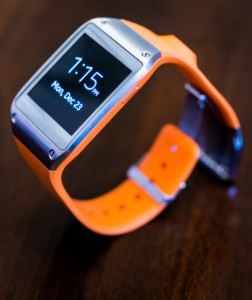Innovation Assimilation

Next?
In 1983, when I was a product manager at NBI, we were second only to Wang in the word processing and office automation market. Then along came the personal computer and disrupted Wang, NBI, CPT and every other vendor of dedicated word processing equipment.
I’ve written about this previously as an example of disruptive innovation. But I could also describe it as assimilative innovation. NBI’s products did one thing – word processing — and did it very well. The PC, on the other hand, was multifunctional. It could do many things, including word processing (although not as well as NBI). The multifunction device assimilated and displaced the single function device.
We’ve seen many examples of assimilative innovation. When I bicycled across America, I bought a near-top-of-the-line digital camera to record my adventures. It took great pictures. It still takes great pictures. But I hardly ever use it. My smartphone does a lot of things, including taking great pictures. Though my smartphone’s pictures are not as good as my camera’s, they’re good enough. Additionally, the smartphone is a lot more convenient.
Years ago, the automotive industry produced an odd example of innovation assimilation. American cars had a big hole in the dashboard (fascia) where you could slot in a radio and cassette player. You were supposed to buy the audio equipment from the car manufacturer but consumers quickly figured out that they could get it cheaper from after-market vendors.
So, did the auto manufacturers lower their prices? No way, Instead, they re-designed their dashboards so that the audio equipment came in several pieces that an after-market vendor couldn’t easily mimic. In other words, the manufacturers tired to assimilate the competition.
In this case, it didn’t work. The after-market vendors sued, claiming illegal restraint of trade. The courts agreed and ordered the manufacturers to go back to the big hole in the dashboard. I suspect this was a precedent when Nestlé sued to stop third-party vendors from selling coffee capsules for the popular Nespresso coffee maker. Nestlé lost. The courts ruled that Nestlé had created a platform that allowed for permisionless innovation.
What will be assimilated next? I suspect it’s going to be fitness bands. I wear the Jawbone band on my wrist to keep track of my activity and calories. It’s pretty good and seems to compete well with three or four other fitness bands on the market. The new Apple Watch, however, appears to have similar (or even better) functionality built into it. The Apple Watch is, of course, multi-functional. If history is any guide, the multi-functional and convenient device will displace the single purpose device, even if it doesn’t offer better functionality.
What’s the moral? When you buy a single function device, be aware that it’s likely to be assimilated into a multi-function device in the future. That’s not a bad thing as long as you’re aware of the risk.
Hawthorne, Heisenberg, and Me

I’m watching you.
Suellen bought me one of those activity-tracking wristbands for my birthday. It keeps track of what I do — including how much time I spend sitting around, how often I’m up and about, how many steps I take, how long I sleep, (including light sleep versus deep sleep), and so on. It will even beep if I sit still too long. It’s telling me to get up, move around, and keep my blood from pooling.
It also calculates how many calories I’ve burned and consumed each day. The system has a good database of foods that I can pick from (or add to). I can, for instance, pick chicken sandwich from the database and learn that I’ve consumed 252 calories, 26 grams of carbs, 20 grams of protein, 466 milligrams of sodium, and 47 milligrams of cholesterol.
I always thought that I kept close tabs on my diet. But the activity tracker delivers much closer scrutiny. I’ve learned a lot about sodium and cholesterol, for instance. I’ve also learned that a glass of red wine has 130 calories while a glass of bourbon has only 50. That’s useful knowledge.
I’ve also re-learned an old lesson: if you observe something, it changes. Simply observing what I eat has changed what I eat. I can ask myself, “I’ve eaten how many calories today? Do I really need that third cheeseburger?”
I’m certainly not the first one to observe this effect. In social science, it’s known as the Hawthorne Effect and derives from experiments in the 1920s at the Hawthorne Works, a Western Electric factory near Chicago. It was the early days of industrial engineering and researchers wanted to know if lighting levels would affect productivity. The researchers measured productivity at an initial level of illumination. Then they improved the illumination and noted that productivity increased. They improved illumination again and productivity improved again. Each time the researchers improved illumination productivity improved.
So, we can conclude that better lighting yields better productivity, correct? Well, not so fast. At the end of the trials, the researchers returned the illumination to its initial level and … productivity improved yet again. The researchers weren’t measuring the effects of illumination at all. They were measuring the effects of observation. When observed, the workers changed their behavior. Perhaps they enjoyed the attention. Perhaps they were angling for a raise. But the mere fact that they were observed, changed their behavior.
In physics, the same (general) phenomenon is known as the Heisenberg Uncertainty Principle. In 1927, Werner Heisenberg stated the basic principle: you can know a subatomic particle’s position or you can know its momentum but you can’t know both. The more certain you are of one, the more uncertain you are of the other. Why can’t you know both? Because of the “… jolt-like disturbance triggered by the act of observation.” If you observe a subatomic particle, it changes its behavior. (Since Heisenberg’s time, the effect has been found in many physical systems and it’s generally known as the observer effect).
We can see similar effects in everyday life. If I don’t know that you’re taking my picture, I’ll behave one way. If I do know, I’ll behave another way (and show you my best side). If I don’t know that a policeman is around, I’ll behave one way. If I do know, I’ll behave another way (most likely).
It’s also a good management principle to keep in mind. A process that’s observed will change its behavior. The more closely you observe, the greater the change. If you want to change something, whether it’s your diet or factory productivity, just pay attention.